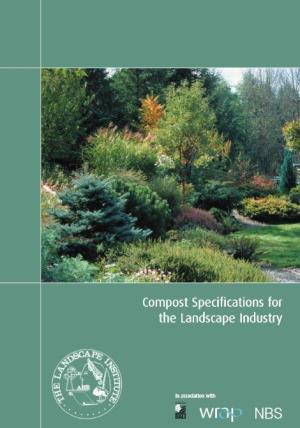 , the British Association of Landscape Industries (BALI)
, the British Association of Landscape Industries (BALI)  and leading consultants Enviros, NBS collaborated in a project led by the Waste and Resources Action Programme (WRAP)
and leading consultants Enviros, NBS collaborated in a project led by the Waste and Resources Action Programme (WRAP)  This guidance to help landscape architects and local authorities to adopt greener practices is part of a detailed series of product and end use specifications for landscaping applications.
This guidance to help landscape architects and local authorities to adopt greener practices is part of a detailed series of product and end use specifications for landscaping applications.
Designed to help the landscaping industry to specify compost made from organic waste which meets the necessary quality and performance criteria, the guidance has been incorporated into several NBS work sections to allow our subscribers to produce comprehensive and authoritative compost specifications.
Compost produced from organic waste delivers many benefits, including increased nutrient levels and improved water retention. These translate into enhanced plant growth, quality and survival. The specifications allow landscape architects to exploit these beneficial characteristics in a wide range of projects.
The guidance built on BSI PAS 100 for Composted Materials, launched by WRAP in November 2002 to provide minimum requirements for the composting process and the quality of the end product. Tailored to meet the landscaping industry’s quality and performance requirements and encourage the specification of standardised compost, they are based on related industry research and common practices.
The product specifications specify a range of horticultural parameters, in addition to those required by BSI PAS 100, for each of the following landscaping applications:
- Top dressing and grass maintenance
- Garden bed establishment
- Manufactured ‘soil’
- Tree and shrub planting
- Turf establishment, renovation and maintenance
- Mulching.
The horticultural parameters include properties such as pH, electrical conductivity, moisture content, organic matter content, particle size and C:N ratio.
Presented in NBS format, the specifications provide information regarding the use of compost and the characteristics and benefits of composted products, as well as other related information. While voluntary in nature, they are designed for use as required specifications for any relevant projects.
Compost specifications for the landscape industry ![]() (.pdf, 1.9Mb) is available to download as a .pdf document from the WRAP website.
(.pdf, 1.9Mb) is available to download as a .pdf document from the WRAP website.

